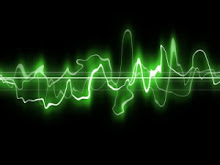When Greg, my brother, warned me not to listen to Morphine's Cure for Pain, their second album, I'm sure he knew full well that, at the first opportunity, I would throw myself into it. So two full hearings of this amazing album accompanied me all the way up to Melbourne today on the train and then again tonight back at home.
You expect an album with a name like "Cure for Pain", played by a band with a name like "Morphine" to have at least some sort of dark side to it - and it certainly does, but in ways that, at least for me, were very unexpected.
The first thing I noticed about this album was its unique sound - mostly produced by a baritone saxophone, a two-string bass, drums and the rough, almost Lou Reed-like voice of Mark Sandman. Add to that some swinging, swaggering beats and you end up with something that isn't quite rock, isn't quite jazz, isn't quite blues, and yet is somehow all of these at once.
But, to me, the undisputed hero of this album is the sax. It dances, it slides, it swings, it grumbles - always throwing everything else into its shadow ... quite literally, really, with its dark baritone tones. It is always the soul of the song - sometimes in dialogue with the singer, sometimes actually underlining his words, as in the line "It's all wrong", in the song of the same name, as if to tell us that here, for once, the singer really is telling us the truth.
The songs are all pretty bleak - and even where there is a hint of pleasure, it's always deceptive and illusory, like the drug induced hopes of "Let's take a trip together", or the distant, cold and out-of-place praise that the singer heaps on his ex-lover in "In spite of me". (Interestingly, this is one of the only tracks on the album where the sax makes no appearance at all.) Or even the sleaziness of "Sheila", with the sleek, slick bounce of the sax and its sordid sexuality.
The album starts and finishes with two short purely instrumental tracks. It opens with "Dawna", which does, indeed, sound like a dark, grey dawn. And it ends with the unimaginably eerie and haunting "Funeral for Miles Davis" - once again, without the sax as if, with Miles's passing, the soul of the music had passed too.
This is a tremendous and superbly original album. It's an album that certainly does swing and dance - but always only in the shadows. And, as we learn so clearly from the album's title track, this music is not about finding a cure for pain, but about searching for it.
Subscribe to:
Post Comments (Atom)


No comments:
Post a Comment